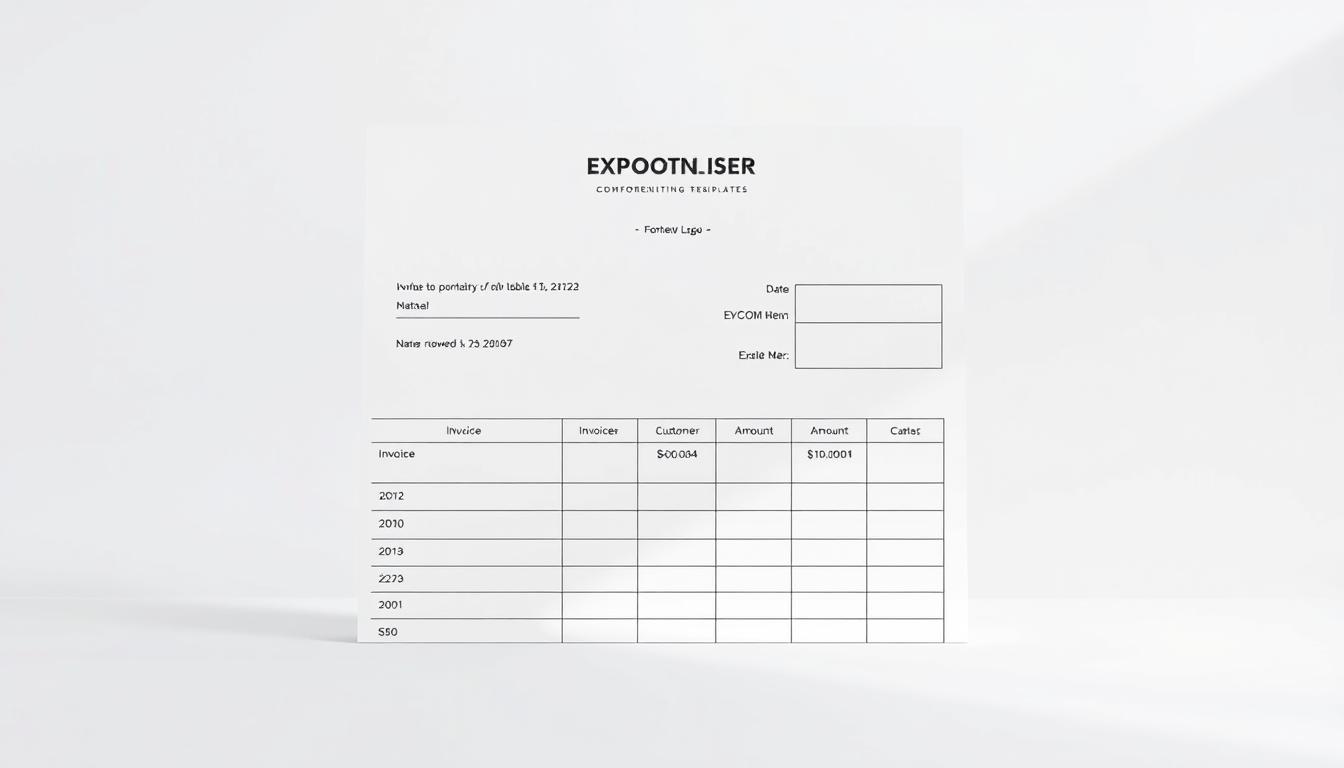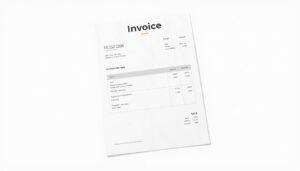As Benjamin Franklin once said, “An investment in knowledge pays the best interest.” In today’s fast-paced business environment, having the right tools for accounting can make all the difference. For Indian SMEs, especially in the $447 billion merchandise export market, structured documentation is no longer optional—it’s essential.
Customs delays affect 23% of Indian SMEs, often due to incomplete or incorrect paperwork. A well-designed template can prevent these issues, ensuring smoother transactions and faster clearance. Tools like Vyapar offer mobile-friendly solutions with GST-compliant formats, automating up to 68% of manual accounting tasks.
For businesses seeking efficiency, a standardized template is a game-changer. It’s compatible across devices, from Windows to Android, making it ideal for field use. Additionally, platforms like Karbon provide cloud-based tracking for enterprises looking for advanced solutions.
Ready to streamline your accounting process? Download a free Excel or PDF template today and take the first step toward hassle-free documentation.
Key Takeaways
- Structured documentation is crucial for India’s $447 billion export market.
- Customs delays impact 23% of Indian SMEs due to improper paperwork.
- Vyapar offers GST-compliant formats and automates 68% of manual tasks.
- Cross-device compatibility ensures flexibility for field use.
- Proper documentation speeds up customs clearance by 91%.
Why You Need an Export Invoice Register Template
Proper documentation is the backbone of seamless global transactions. For businesses involved in international trade, a well-structured template is not just a formality—it’s a necessity. IncoDocs, for instance, reported a 40% reduction in customs disputes by using standardized formats.
In India, improper documentation leads to annual losses of $2.6 billion. Missing port codes, incorrect currency declarations, or incomplete commercial invoices can result in delays, penalties, and even shipment rejections. These issues highlight the importance of accuracy in tracking goods and transactions.
The Reserve Bank of India (RBI) mandates strict tracking of foreign currency transactions. Templates simplify this process by capturing essential details like HS codes and Incoterms 2020. They also ensure compliance with DGFT regulations, which are critical for MSME exporters.
Manual creation of invoices takes an average of 3.2 hours, while template-assisted processes reduce this to just 22 minutes. Tools like Vyapar further enhance efficiency with auto-GST calculations, cutting tax errors by 83%. For larger enterprises, Karbon’s audit trail capabilities provide added security and transparency.
Using a standardized format ensures that all critical fields, such as payment terms and commercial invoice details, are included. This not only speeds up customs clearance but also minimizes the risk of disputes. In today’s fast-paced trade environment, such tools are indispensable.
Here’s a quick checklist for compliance:
- Ensure accurate HS codes and Incoterms 2020.
- Include port codes and currency details.
- Verify GST calculations and tax compliance.
- Maintain a clear audit trail for large transactions.
Key Components of an Export Invoice Register
Effective accounting relies on structured and detailed records. A well-designed system ensures that all critical information is captured accurately. This is especially important for businesses of all sizes, from small enterprises to large corporations.
Essential Fields to Include
Every system must have specific fields to ensure compliance and accuracy. Mandatory entries like GSTIN/IE codes are required by CBIC regulations. Other critical details include the date, number, and unit price of each product.
Sequential numbering of documents is a best practice recommended by the CA Institute. This helps maintain order and prevents errors. Additionally, clear product descriptions avoid vague terms, ensuring compliance with WTO rules.
Customization Options
Flexibility is key for businesses with varying needs. Tools like Vyapar offer 18 customizable fields, while IncoDocs provides a professional version with 32. This adaptability ensures that companies can tailor the system to their specific requirements.
Automated features, such as currency conversion for 164 foreign currencies, save time and reduce errors. Customizable tax columns for IGST, CGST, and SGST with auto-population further enhance efficiency. For high-volume operations, bulk-edit features streamline the process.
Advanced solutions like Karbon’s API integration with ERP systems offer seamless data flow. Dynamic fields for container numbers and BL/AWB references add another layer of detail, making the system robust and versatile.
- Mandatory GSTIN/IE code fields per CBIC regulations.
- Automated currency conversion for 164 foreign currencies.
- Sequential invoice numbering as per CA Institute guidelines.
- Customizable tax columns: IGST, CGST, SGST with auto-population.
- Clear product descriptions avoiding vague terms per WTO rules.
- Bulk-edit features for high-volume operations.
- API integration with ERP systems for seamless data flow.
- Dynamic fields for container numbers and BL/AWB references.
Benefits of Using an Export Invoice Register Template
Streamlining financial processes is critical for businesses in today’s competitive market. A well-designed system can significantly reduce manual effort and improve accuracy. For instance, standardized formats have been shown to speed up payment processing by 57%, according to Vyapar data.
One of the standout advantages is improved compliance tracking. Businesses using such systems report a 92% enhancement in MEIS/SEIS scheme adherence. This ensures smoother audits and reduces the risk of penalties.
Real-time analysis of export turnover is another key benefit. This feature simplifies RBI reporting, enabling businesses to stay updated on their financial health. Automated retention periods, mandated for at least five years under GST, further enhance compliance.
Advanced software like Vyapar incorporates OCR technology, cutting data entry time by 70%. This not only minimizes errors but also boosts productivity. For example, a Coimbatore textile exporter saw a 33% increase in duty recovery after adopting such tools.
Predictive analytics, offered by platforms like Karbon, help prevent LC discrepancies. Multi-user access controls facilitate seamless collaboration between CHAs and CAs. Automated backups to the E-Way Bill Portal via API integrations ensure that all documents are securely stored and easily accessible.
In summary, adopting a structured system for managing financial transactions offers numerous benefits. From reducing errors to enhancing compliance, these tools are indispensable for modern businesses.
How to Create an Export Invoice Register
Creating a structured system for managing international transactions is essential for businesses aiming to streamline operations. A well-organized approach ensures accuracy, compliance, and efficiency in global trade. Here’s how to build a robust system step by step.
Step-by-Step Guide
Start by gathering all necessary details, including quantities, items, and description of goods. Tools like Vyapar can auto-populate this data from purchase orders, saving time and reducing errors.
Next, ensure the cost of each item is accurately recorded. Use RBI’s FEMA-compliant value declaration methodology to avoid discrepancies. Platforms like Karbon offer AI-powered HS code suggestions, simplifying this process.
Include a proforma invoice for reference, ensuring it matches the commercial invoice. Proper INCOTERMS 2020 usage, such as CIF vs FOB calculations, is crucial for accurate valuation.
Finally, validate all entries using IncoDocs’ 14-point checklist. This ensures compliance with customs valuation rules and avoids common pitfalls.
Common Mistakes to Avoid
One frequent error is mismatching commercial and proforma invoice details. This can lead to delays and penalties. Always double-check quantities, items, and description fields for accuracy.
Another mistake is omitting the buyer’s PAN/TAX ID. This can result in compliance issues. Tools like Vyapar flag missing fields, helping businesses stay on track.
Incorrect INCOTERMS usage is also a common issue. Ensure proper CIF vs FOB calculations to avoid valuation errors. Karbon’s AI-powered suggestions can assist here.
Lastly, failing to correct errors post-filing can lead to long-term problems. Always review and rectify mistakes promptly to maintain compliance.
- Use RBI’s FEMA-compliant value declaration methodology.
- Ensure commercial and proforma invoice details match.
- Include buyer’s PAN/TAX ID for compliance.
- Verify INCOTERMS 2020 usage (CIF vs FOB calculations).
- Correct errors promptly to avoid penalties.
Export Invoice Register Template: A Tool for Compliance
In the realm of international trade, compliance is not just a requirement—it’s a strategic advantage. A well-structured system ensures alignment with regulatory standards, reducing risks and enhancing efficiency. For instance, a 2023 DGFT report revealed that 78% of audits flagged discrepancies in documentation, highlighting the need for accuracy.
Aligning with CBIC’s Invoice Reference Number (IRN) system is crucial for seamless operations. This ensures that all transactions are traceable and compliant with tax regulations. Additionally, tools like Vyapar offer automatic SAFTA compliance checks, simplifying adherence to trade agreements.
Meeting EXIM Bank’s letter credit negotiation requirements is another critical aspect. Proper documentation ensures smooth transactions and minimizes delays. For businesses handling duties taxes, platforms like Karbon provide real-time updates on tariff rule changes, ensuring compliance with evolving regulations.
Handling preferential tariff claims under FTAs requires meticulous documentation. Integrating ICEGATE tracking numbers ensures transparency and accountability. Retention requirements for EOUs/SEZs further emphasize the importance of maintaining accurate records for at least five years.
In summary, a robust system for managing international transactions not only ensures compliance but also enhances operational efficiency. By aligning with regulatory standards and leveraging advanced tools, businesses can navigate the complexities of global trade with confidence.
Streamlining International Trade with the Right Tools
Choosing the right tools can make or break your international trade operations. Whether you’re a small business or a large enterprise, the software you use plays a crucial role in ensuring smooth transactions and compliance.
For SMEs, Vyapar offers a mobile-first approach, catering to over 9.4 million users. Its multi-lingual capabilities support 12 languages, making it accessible to a diverse user base. On the other hand, Karbon focuses on enterprise clientele, offering blockchain-based document authentication for enhanced security.
When it comes to cost, free templates are ideal for startups, while ERP modules are better suited for larger businesses. Integration with India’s Trade Portal single window ensures seamless operations, reducing delays in shipment processing.
Advanced features like automated AD Code/SHIP Code generation and real-time vessel tracking API connections further enhance efficiency. Cybersecurity measures protect sensitive export data, ensuring compliance with international standards.
- Mobile-first vs desktop optimization tradeoffs.
- Multi-lingual template capabilities (Vyapar: 12 languages).
- Karbon’s blockchain-based document authentication.
- Cost comparison: Free templates vs ERP modules.
- Integration with India’s Trade Portal single window.
- Automated AD Code/SHIP Code generation.
- Real-time vessel tracking API connections.
- Cybersecurity features for sensitive export data.
In summary, selecting the right version of software tailored to your business needs can significantly streamline your international trade operations. From mobile accessibility to advanced security features, these tools are essential for modern trade success.
Conclusion
Adopting the right tools can transform your business operations, ensuring efficiency and compliance. With a 34% average efficiency gain from using structured formats, businesses can focus on growth rather than paperwork. Vyapar, rated 4.8/5 by 214k users, offers mobile-friendly solutions, while Karbon provides advanced features for enterprises.
Before downloading, ensure your documentation meets all compliance standards. Use a final checklist to verify details like HS codes, Incoterms, and tax calculations. Tools like Vyapar and Karbon simplify this process with auto-population and real-time updates.
For further guidance, explore DGFT’s latest circulars or watch tutorial videos on template customization. Connect with export promotion councils or GSTN helpdesk for additional support. Streamline your process with an animated workflow diagram for an ideal export journey.
Ready to enhance your operations? Download the right solution today and take the first step toward seamless international trade.







